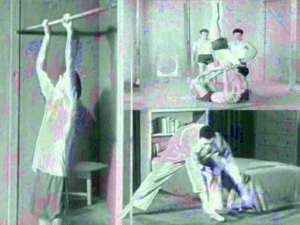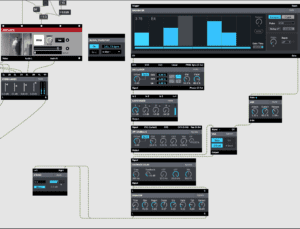Link to Gist: https://gist.github.com/cy1323/c456d1a8f632b6306e42be72a519d756
Process:
As the assignment asked me to play around solely with the audio, I did not make any changes to the visual composition of the example granular synthesis provided in class. Instead, I went straight to work on its audio components.

First of all, I created a base-layer for my synthesized audiovisual components to lay upon. I downloaded 2 distinct files from freesound.org and uploaded them into the patch through the usage of Cell MIDIs. I attached these base layers to a larger drum sequencer, and with past knowledge, I used the sequencer to implement the audio files into the composition at separate paces. Once I was satisfied with how the base sounded, I combined the two through a stereo mixer followed by an audio mixer.
Audio 1: https://freesound.org/people/josefpres/sounds/493117/
Audio 2: https://freesound.org/people/TA-AT/sounds/492439/
After the base layer, I focused more on creating the effects for my videos. I reviewed the beap selections and finalized my decisions down to the flanger, gigaverb, chorus, and smooth delay. I attached each of these to the separate audio channels of the granular synthesis videos and played around with the settings until I was satisfied. There were aspects of the controls that I wished to manipulate with generative components in Vizzie, but was stumped in the process of trying to isolate certain features.
Continuing on, I mixed all of these beap effects into a larger stereo mixer before sending them into the audio mixer I had created beforehand with the base layer. From this audio mixer, I combined the likes of the audio effects and the base layer together before sending the output out through a final stereo.
In the end, I was able to achieve an interesting audio compilation significant in its relation to the video compositions present. I still do wish I could have achieved my intention of isolating certain audio effects, but nonetheless, I am still happy with the outcome of this mini-project.












